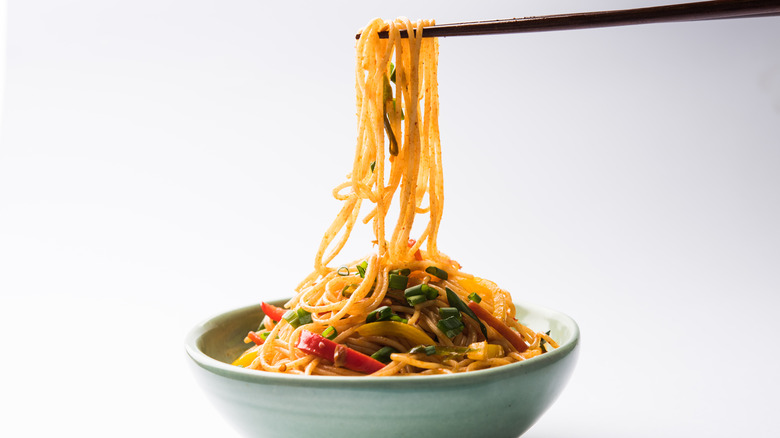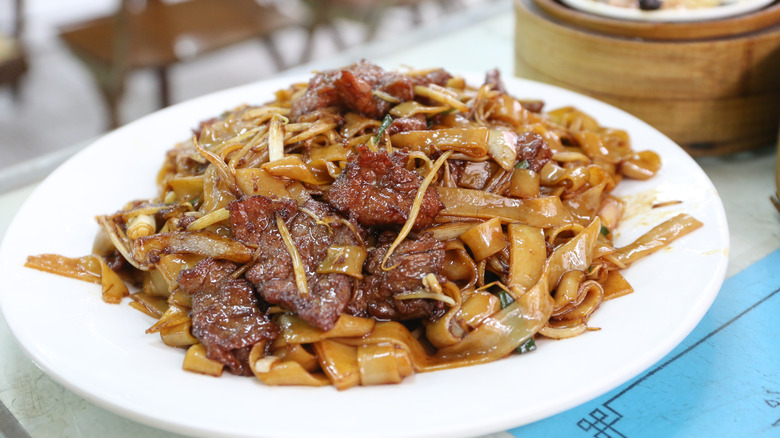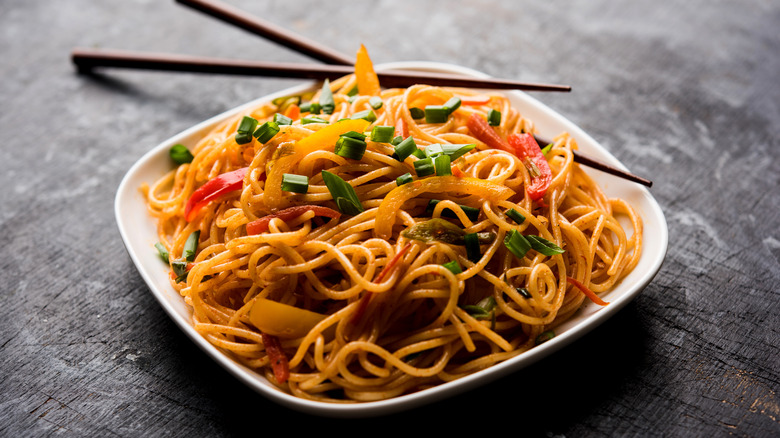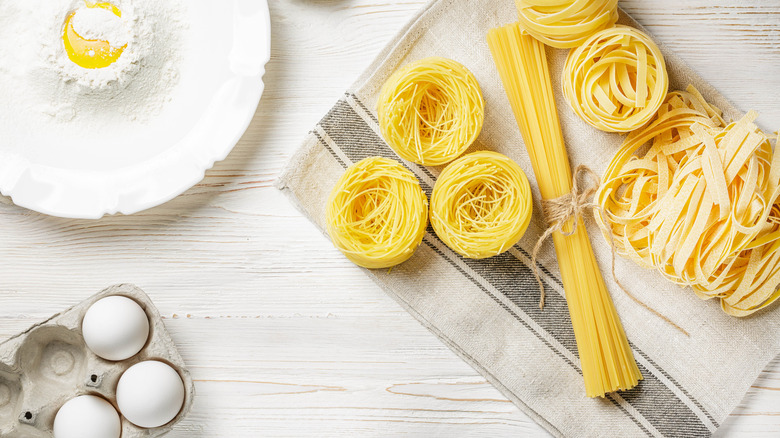Chow Fun Vs Chow Mein: What Are The Differences?
Chow fun and chow mein are both popular noodle-based Chinese dishes. The two may have similarities, but their distinct differences in noodles and cooking style make it easy to tell them apart. While chow fun is made with rice noodles, chow mein is made with egg noodles, according to YUM CHINA.
Whichever scrumptious noodle-based dish you decide to go with, you will still enjoy some of the best flavors there are to offer. Soy sauce soaks into each noodle, with crunchy bean sprouts and your choice of meat or veggies all mixed and put into one bowl. These two dishes are considered as artistic Chinese cuisine.
It may be hard to pick which one is your favorite, as they do still offer a wide range in differences that your taste buds have to pick from. With noodles aside, what really sets these two apart from one another?
What is chow fun?
The origin of chow fun is not nearly as clear as its signature beef flavor, says Taste Atlas. What we do know is that it was invented during World War II in Guangzhou, a city in China. This pretty affordable dish can be found at yum cha restaurants, which are usual dim sum style Chinese restaurants.
The main ingredient in chow fun are the delicate rice noodles, which can break if not cooked properly. So, how do you master the art of chow fun? Simple! You must master your stir-frying technique and not be afraid of a smoking hot wok, says to The Woks Of Life.
When cooking in a wok, it is referred to as "wok hei," meaning "breath of the wok," when you cook over high heat, which is exactly what you must do to get the best chow fun. Put on your oven mitts if need be, cause that wok will be sizzling. Another top notch skill is "pow wok." When you are at a Chinese restaurant and see the chefs throwing the noodles in the air without a spatula, you are watching them perform the essential technique of "pow wok” (via The Woks Of Life).
If you don't mind a few broken noodles, it doesn't matter if you want to use a spatula — you will still get that great flavor. All you need is some thinly sliced beef steak, noodles (huo fun), soy sauce, oil, and ginger to bring that yum cha restaurant feel to your own home.
What is chow mein?
The origin of chow mein is difficult to pinpoint. Taste Atlas says that it probably originated in Northern China, which is a bit far from where chow fun originated from. After being brought to America from China in the 1850s, it has stayed a classic favorite. You can find it at just about any local Chinese restaurant.
Chow mein is made with egg noodles, which are a bit smaller than the rice noodles used in chow fun. The variety that can come with these noodles alone makes it a stand alone dish, as you can get them fried or soft! Whether you want a "noodle pancake" topped with stir-fried meat and veggies or it all mixed into one pan, you have options with chow mein.
Chow mein (in Mandarin "ch'ao mien") means fried noodles, so when you hear someone say they are making stir-fry that is usually what they are making. Unlike chow fun, you can become a master chef at chow mein without a wok. A large skillet or pan will pull of the same level of perfection as a wok will.
Open your cabinet and pull out your favorite big skillet and get to cooking. All you need is some veggies like bok choy and mushrooms, soy sauce, oyster sauce, ginger, and your noodles, of course, and you will have a simple, yet filling "stir-fry."
What are the nutritional differences between the two?
They may be similar in some ways, but the nutritional differences between chow mein and chow fun are staggering. Although they both contain noodles, one is fried and the other is not, making one far healthier than the other (via YUM CHINA).
What you eat is totally up to you, but there are big calorie differences between these dishes. Chow fun only has about 109 calories in 100 grams, whereas chow mein has 527 calories. Quite the difference huh? That is because chow mein uses much more oil than chow fun.
Every cup of cooked rice noodles is about 192 calories and every cup of egg noodles is about 221 calories. You can always switch out either dish with different noodles, but like any other healthy swap, the flavor won't be the exact same. Shockingly enough, there are 12 grams of fat in egg noodles and only 1.2 in rice noodles!
Don't let the numbers scare you, though — there are plenty of ways to add protein and veggies into each dish to make it more of a well-balanced dinner. You can still enjoy each sweet and savory bite, just maybe not too many!



